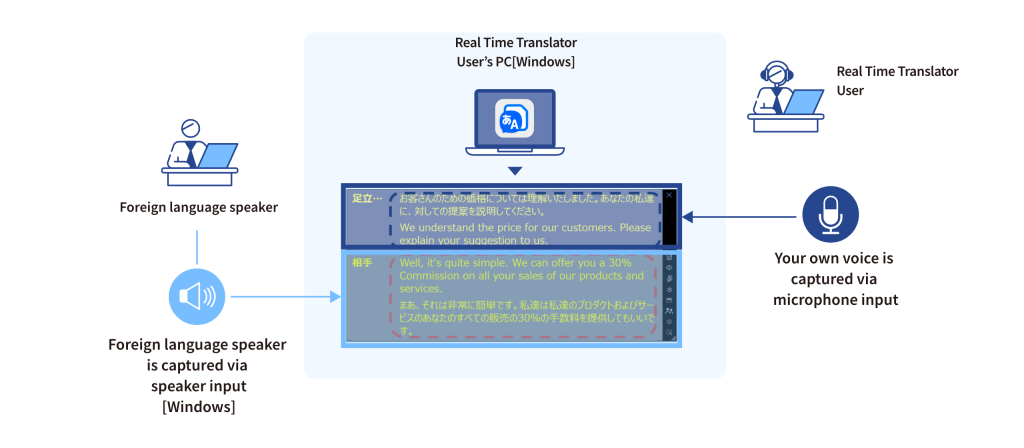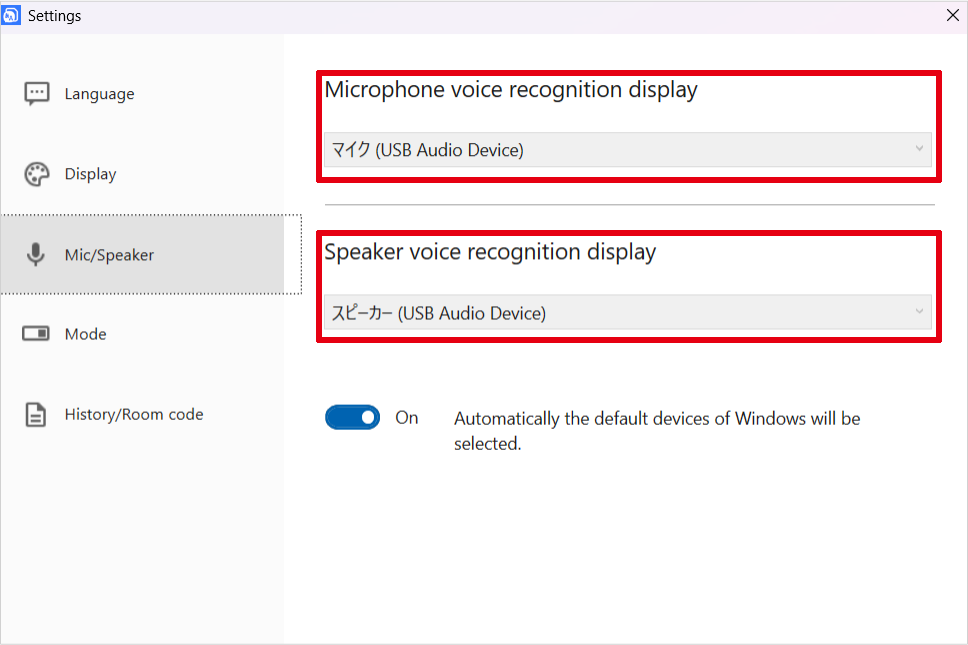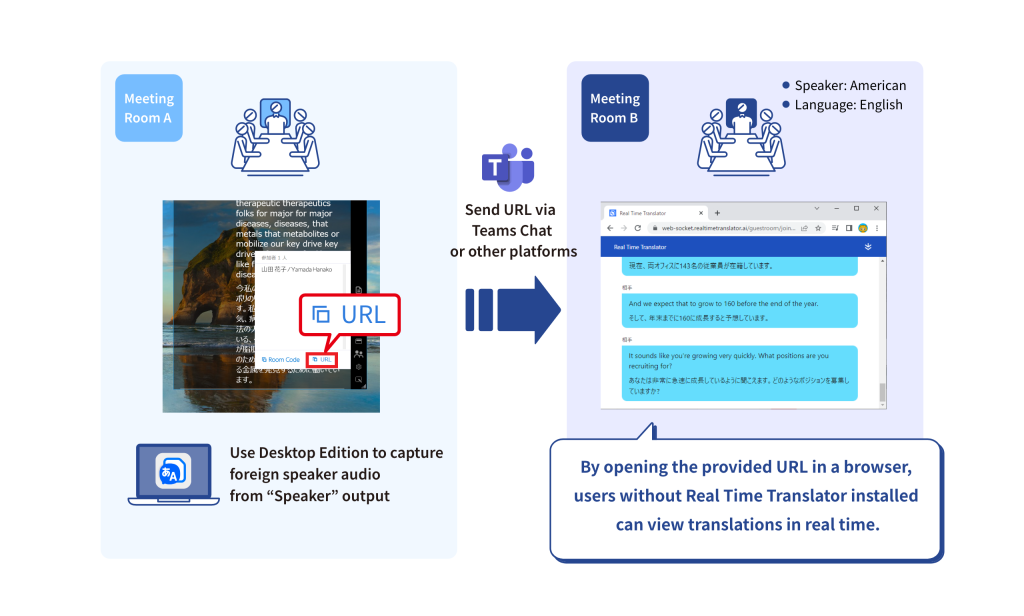Simultaneous Interpretation in Multilingual Web Meetings Real Time Translator Use Cases
Simultaneous Interpretation in Multilingual Web Meetings
To facilitate smoother communication among participants speaking different languages during web meetings, Fairuse Inc.’s Real Time Translator is highly recommended. This article provides practical use cases and configuration guidance for simultaneous interpretation using the Real Time Translator tool.
Table of Contents
Key Advantages of Using Real Time Translator for Multilingual Meetings
The primary benefit is seamless multilingual communication, significantly reducing misunderstandings and communication gaps in international business meetings.
- Instantaneous translation of spoken content
- Direct interaction without interpreters
- Accurate textual translation for clarity
Below, we introduce two use cases for multilingual web meetings.
Use Case 1: Participating in Web Meetings from Your Own Desk
User 1: Participating from home or desk, using Real Time Translator
User 2: Foreign language speaker
Real Time Translator captures User 2’s audio via User 1’s PC, translating it in real-time. User 1’s voice is captured via microphone, while User 2’s voice is captured via speaker.

Language Configuration
Set languages within “Language” settings:

Microphone & Speaker Configuration
Set microphone and speaker via “Microphone & Speaker” settings:

Use Case 2: Sharing URLs for Web Meetings with Overseas Offices
User 1: Japanese-speaking
User 2: Foreign-speaking overseas employee
Potential challenges:
- Desktop version cannot be installed on overseas employee’s PCs.
- Limited time to share Web version room codes.
Solve by providing overseas employees with a real-time translation URL.

By opening the provided URL, overseas employees without installed Real Time Translator can still view translations in real-time via browser URL.
Common Challenges Encountered in Multilingual Web Meetings
Multilingual web meetings face several challenges:
- Real-time communication difficulties causing misunderstandings.
- Interpreter hiring is costly and complicated.
- Sequential interpretation slows meeting flow significantly.
Simultaneous interpretation apps effectively address these challenges.
How Simultaneous Interpretation Apps Work
These apps leverage advanced AI:
- Speech Recognition: Converts spoken words into text.
- Machine Translation: Translates text in real-time.
- Text-to-Speech: Converts translated text into audible speech.
Benefits of Simultaneous Interpretation Apps
- Real-time, seamless communication.
- Significant reduction in interpreter-related costs.
- Enhanced global business opportunities and productivity.
Key Considerations for Selecting Apps
- Languages and Translation Accuracy: Ensure comprehensive support and precise industry-specific terminology.
- Security Measures: Confirm encryption (TLS/AES) and strict privacy policies.
- Real-Time Capability and Quality:Opt for minimal translation delays and high-quality audio recognition.
Conclusion
When selecting a simultaneous interpretation application, carefully evaluate its supported languages, security compliance standards, and quality of real-time translations. Utilize free trials to verify the application’s performance in realistic business settings, ensuring effective communication during multilingual meetings.
Would you like to experience the tools in action?
Other Use Cases
- Smooth Multilingual Meetings for 3+ Languages – With Automatic Language Detection
- Real-Time Voice Translation with Automatic Language Detection for Face-to-Face meetings
- AI Meeting Assistant for Automatic Meeting Minutes Summarization
- Real-Time Speech-to-Text Software for Hearing-Impaired Individuals
- Smart Glasses Real-Time Translation | Seamless Multilingual Communication
- Real-Time Translation for Videos and Webinars